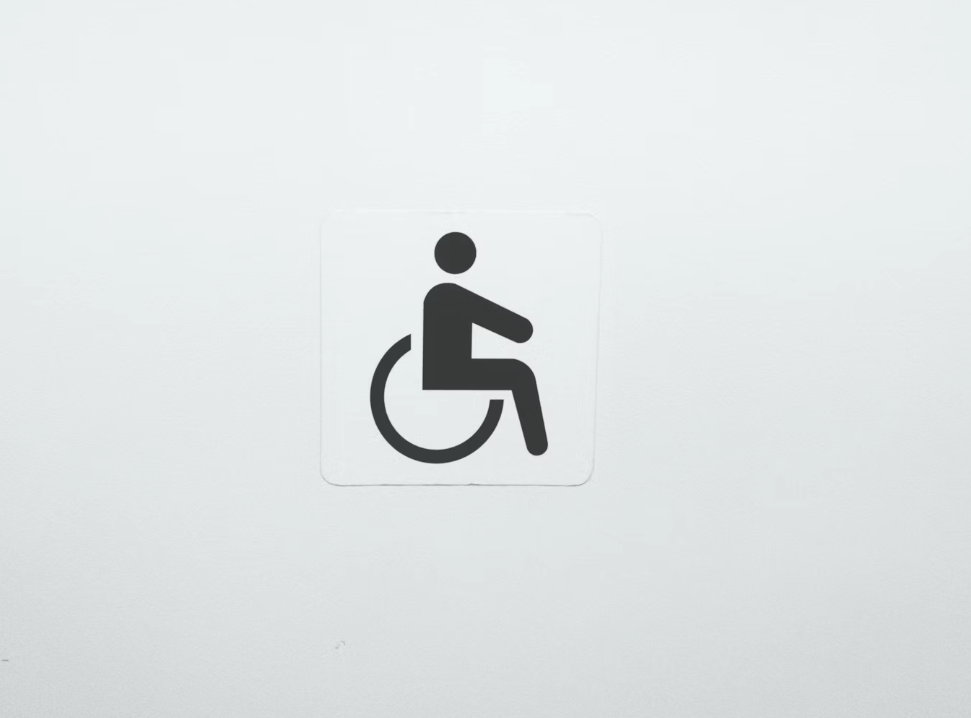When there’s a fire in a building, the first instinct many people have is to panic and run out of the building via the quickest route they know.
However, when working with people who have physical disabilities, it’s important they are not left behind in the panic.
Statistics show that many people believe that leaving a disabled person at a ‘refuge point’ (which are often in evacuation plans) is the correct thing to do, so they can wait for the fire service to collect them.
This is a dangerous myth and has led to people being left in unsafe places.
A fire escape plan must not rely on the fire service to evacuate anybody – this should be a last resort.
We’ve put together an overview of what you need to take into consideration when planning and evacuating a disabled person from a burning building.

Develop An Emergency Evacuation Plan
It is the responsibility of the owner of the building, whether this is the landlord, business owner or manager, to have a comprehensive fire evacuation plan in place at all times.
This plan should include the relevant Personal Emergency Evacuation Plan (PEEP) for disabled individuals. PEEPs might be required for people with:
- Mobility impairments
- Sight impairments
- Hearing impairments
- Cognitive impairments
- Temporary short term injuries
- Temporary short term illnesses
- Heavily pregnant women
PEEPs should be tailored to each individual and adapted when there is a change in the person’s condition. PEEPs contain a wide variety of information, all useful when planning the escape route for people with different disabilities, such as:
- The type of fire alarm to be used
- The marking of escape routes
- Fire instructions in an accessible format for the relevant disability
- Handrails on all stairways
- Step edge markings on the escape stairs
Questions must also be asked about the nature of their work, including:
- Do they work alone?
- Do they work out of hours?
- Do they know what the fire alarm sounds like?
- When they hear the fire alarm do they know where to go?
- Do they work as part of a team or in a group environment?
- Do they work in the same place all of the time?
- Do they use other parts of the building?
- Can they read the escape instructions? (Do you yourself understand them as well?)
If part of the evacuation process for the disabled person involves specialist equipment, the designated person(s) must know how to operate the equipment, and must be retrained once every six months.
You can acquire evacuation chairs, mattress and sheets to assist you with a quick and safe evacuation.
What To Do During a Fire Evacuation?
When the fire alarm starts ringing, it’s crucial there is no delay in other forms of alarms from going off.
People with disabilities must be aware of an emergency evacuation at the same time as everybody else in the building, especially if they work alone.
A designated buddy will meet the person with a disability at a meet point or their place of work, and from there the buddy will assist the person down the relevant escape route and out the building.
By using this method, you’ll ensure nobody is left behind in the event of a fire.
Protect & Detect is a leading fire safety and security company, servicing Ipswich, Colchester, Cambridge, Bury St. Edmunds, Chelmsford and beyond.
Protect & Detect offers a wide range of fire safety and security services including; fire alarms, fire extinguishers, burglar alarms, intruder alarms, fire sprinkler systems, access control, door entry systems, CCTV, barriers, nurse and warden calls. Contact our friendly team today for a quick quote.

